Scroll Down to Read Today’s Essay
Subscribe to Baseball History Comes Alive for automatic updates. As a Free Bonus, you’ll get instant access to my Special Report: Gary’s Handy Dandy World Series Reference Guide!
Yogi Berra Photo Gallery
Click on any image below to see photos in full size and to start Photo Gallery:
Vince Jankoski returns today with an interesting essay detailing Yogi Berra’s path to becoming the Yankees’ regular catcher. It wasn’t as clear-cut as you might think, as Vince’s essay makes clear. I think you’ll enjoy what Vince shares with us today. -GL
WHY DID IT TAKE SO LONG FOR THE YANKEES TO MAKE YOGI BERRA THEIR REGULAR CATCHER?
OTHER YANKEE CATCHERS OF THE 1940s AND 1950s
The 1940s and 1950s were the era of the farm system. Successful teams were successful, in part, because they owned numerous minor league teams and were able to stockpile lots of players from whom they could promote the best to their major league rosters. The rest would be traded or sold off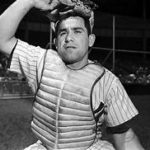
Branch Rickey is widely acknowledged as the creator of the farm system. He developed farm systems first in St. Louis and then in Brooklyn which directly led to the success of those teams. Rickey would receive a cut of the sales proceeds from any player whom the parent team deemed unworthy of their major league roster but who might play or even start for a lesser team.
In addition to the Cardinals and Dodgers, the other team possessing a large farm system during this period was the New York Yankees. The Yankees of this era were particularly adept at collecting catchers with major league potential.
When one thinks of Yankee catchers of the time, one thinks of Yogi Berra, but there were others: Sherm Lollar, Gus Triandos, Aaron Robinson, Gus Niarhos, Charlie Silvera, and Ralph Houk. Take note. They seemed to lean disproportionately toward guys named Gus. The reason for this is beyond the scope of this essay. So, forget it for the moment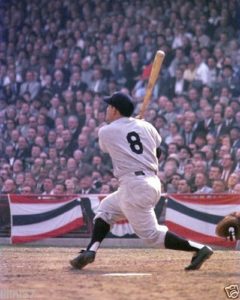
By the mid-1940s, the Yankees were certainly looking for a permanent catcher. Hall of Famer Bill Dickey retired after the 1946 season. Who would his replacement be? Berra was only one potential candidate. He had a powerful bat but had defensive shortcomings. It took the Yankees a few years (and much coaching by Dickey) to resolve Berra’s defensive issues and install him as their permanent backstop. How long did it take for the Yankees to discard the other applicants to Dickey’s vacated position? Longer than Berra’s outstanding career would suggest.
In 1947 Berra played 83 games for New York, but only 51 as catcher. Robinson caught more games (74) with Houk (41), Lollar (9), and Ken Silvestri (3) handling the rest of the catching chores.
In 1948, Robinson was gone, but Berra was still not the full-time catcher. He caught in less than half his team’s games (71) and played 50 games in the outfield. Gus Niarhos had arrived and caught more games (82) than Berra. The remaining catching was done by Lollar (10) and Silvera (4).
It was only in 1949 that Berra became the regular catcher, catching over 100 games for the first of nine consecutive seasons. By then, Lollar had been traded. Niarhos caught in 30 games, Silvera in 51, and Houk in five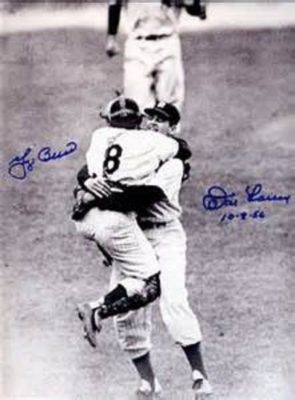
Niarhos was waived at the start of the 1950 season, leaving Berra firmly in control of the catching spot and with Silvera and Houk in their seldom-used backup roles. The waiving of Niarhos also left the Yanks without a catcher named Gus for the first time in a couple of seasons. That state of affairs would change a few years later with the arrival of Triandos. However, Triandos, despite his considerable abilities as shown below, could not budge Berra from the catching spot and was traded after a couple of seasons with the team, leaving the Yankees, once again, Gus-less.
Why did it take so long for the Yankees to make Berra their catcher? One, certainly, was that Berra was a defensive liability. Another was surely that his competitors were quality players.
Lollar was with New York in 1947 and 1948. He even started ahead of Berra in two games of the 1947 World Series, going 3 for 4 with 2 doubles. Lollar was traded to the St. Louis Browns and later to the White Sox where he was their regular catcher for 10 seasons, making the All-Star team 7 times (9 if you count the two games played in 1959 and 1960). He was a mainstay of the 1959 White Sox pennant winners. He was a quality player.
Robinson, too, started 2 games in the 1947 series, including the seventh game, and played most of a third game after replacing Lollar. He was an All-Star the same year. He would be dealt to the White Sox, then to the Tigers where he would more or less be their regular catcher for two seasons. Robinson and Lollar combined got more playing time at catcher than did Berra in the 1947 series. While not as good as Lollar, Robinson was a legitimate contender for the Yanks catching spot.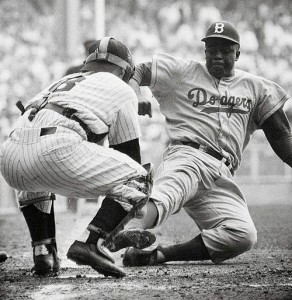
Gus Triandos’ career with the Yankees lasted only 20 games (only six at catcher) over two seasons before he was traded to Baltimore in a massive trade of 16 players on November 17, 1954. He would be the Orioles starting catcher for five seasons. He made three All-Star teams, and appeared on the MVP balloting four times, finishing eleventh in 1958. He was the first catcher to wear the oversized catcher’s mitt, better to catch Hoyt Wilhelm’s knuckleball. He was behind the plate when Wilhelm tossed a 1-0 no-hitter against the Yankees on September 20, 1958. His home run was the only run of the game. Also in 1958, he tied Berra’s record for home runs as a catcher with 30. It has been suggested that Triandos actually broke Berra’s record because Berra did not hit all of his 30 dingers while playing catcher – a dispute for another day.
The other Gus, Niarhos, did little after being waived from the Yanks. He played for 6 more years, never appearing in more than 66 games while hitting .252 for his career with 1 home run in 858 plate appearances.
The two catchers the Yankees did not deal away were Silvera and Houk. Silvera would back up Berra for seven years or a total of 201 games. He hit fairly well for average (.282 for a career, .315 in 149 plate appearances in 1949, .327 in 61 plate appearances in 1952), but with little power (one home run in 542 career plate appearances). He would play on 7 pennant winners but have only 2 World Series at-bats.
Houk played even less. He was on the Yankee roster for eight years, playing in only 91 games. He played on six pennant winners and got only two World Series at-bats. He is remembered more for his managerial exploits, including three consecutive pennants with the Yanks (1961-1963)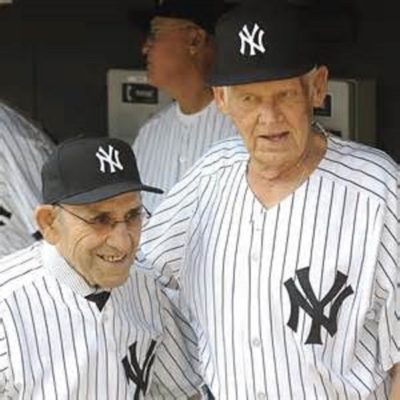
It’s hard to argue that the Yankees didn’t make the right choice in keeping Berra and either trading away the others or regulating them to a back-up role. However, the choice was not all that apparent at the time. The young Berra, notwithstanding his powerful bat, had defensive liabilities. It was seriously suggested that Berra be moved from the catcher’s spot, leaving catching for one of the other prospects. There was also the fact that Berra’s competition was surprisingly stiff. Lollar was a future All-Star with an extensive MLB career. Robinson was a competent veteran who made the All-Star team in 1947. Triandos, while arriving after Berra became the regular catcher, was also a future All-Star with an impressive MLB resume.
Berra won the competition, but it was closer than one might think.
Vince Jankoski
Subscribe to our website, Baseball History Comes Alive with over 1400 fully categorized baseball essays and photo galleries, now surpassing the one million hits mark with 1,114,000 hits and over 950 subscribers: https://wp.me/P7a04E-2he
Information: Excerpts edited from
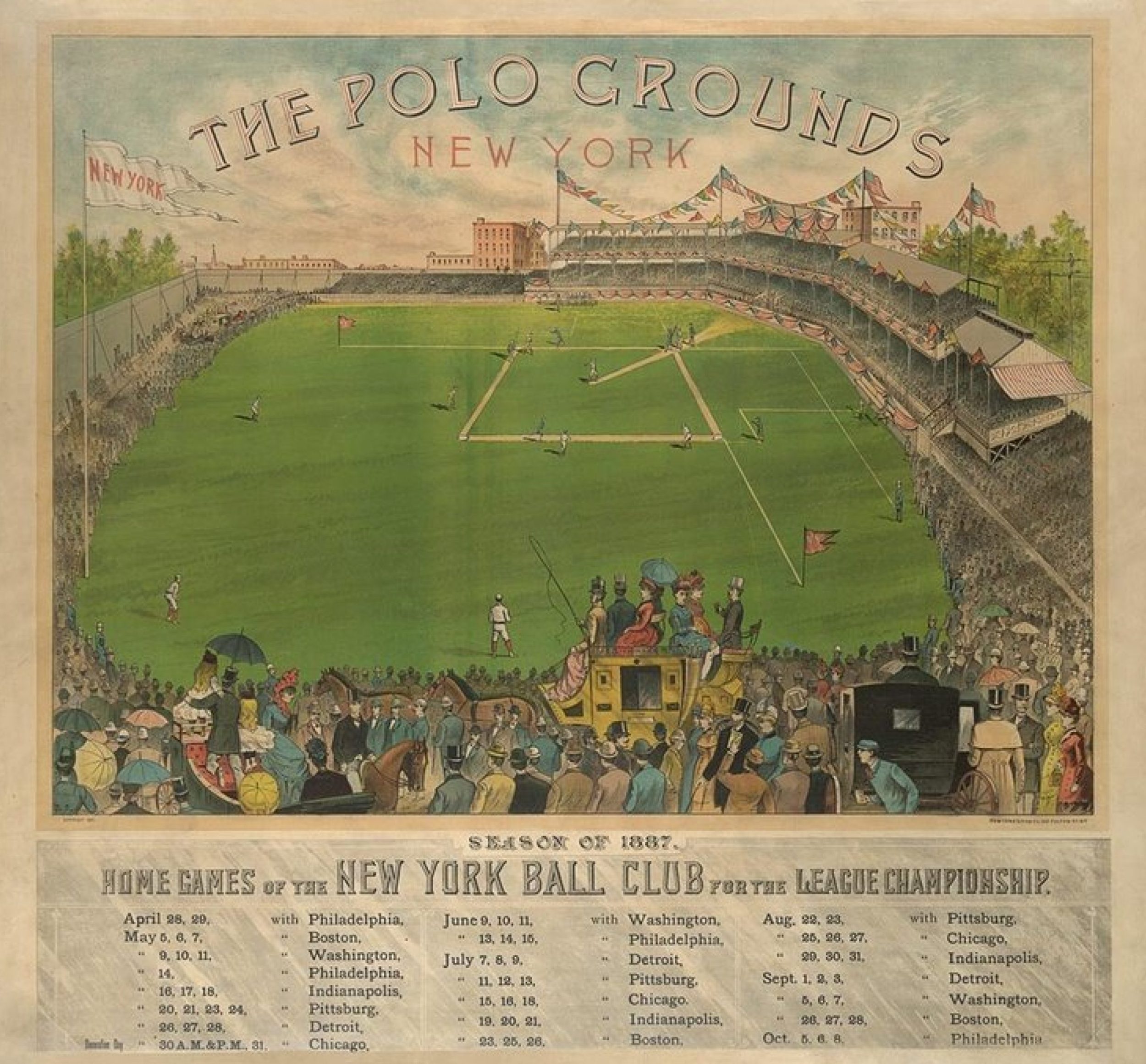
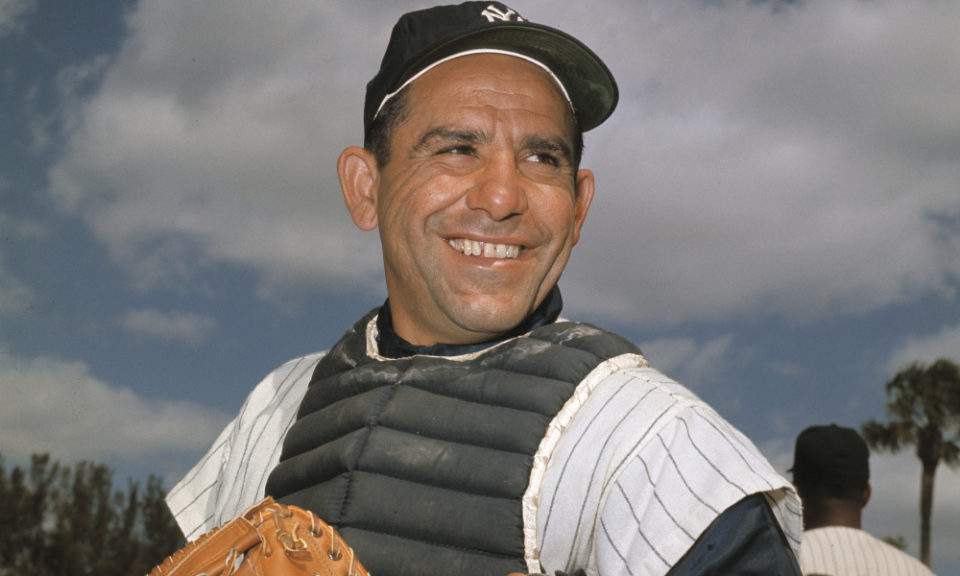
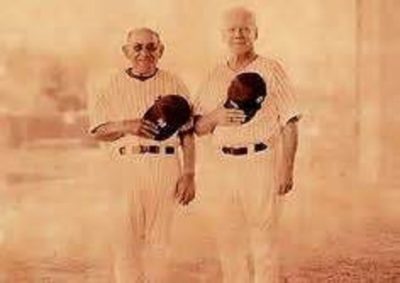
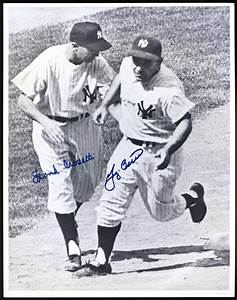
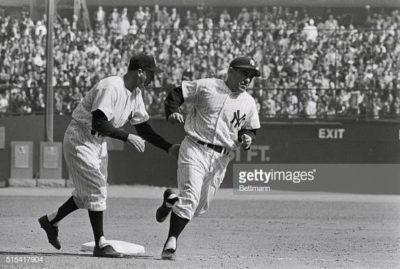
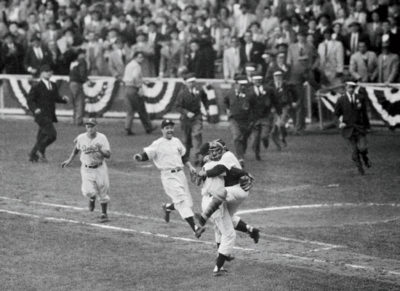
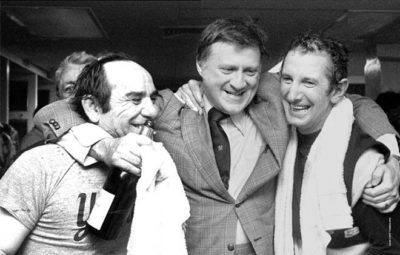
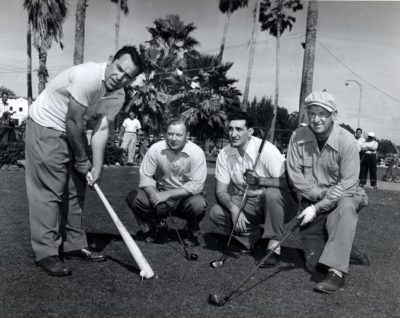
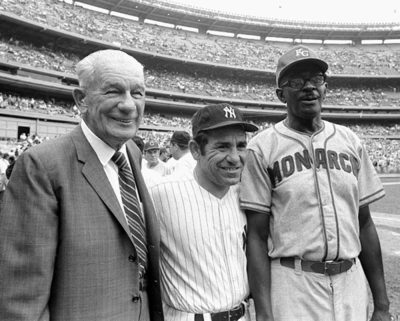
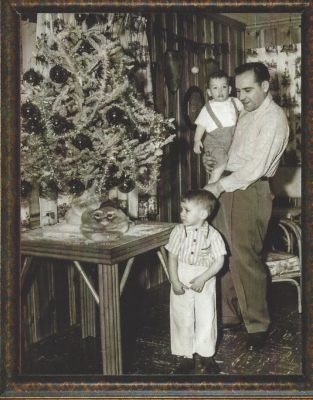
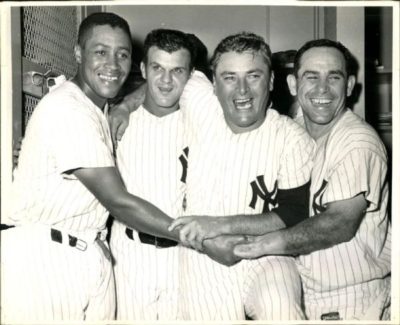
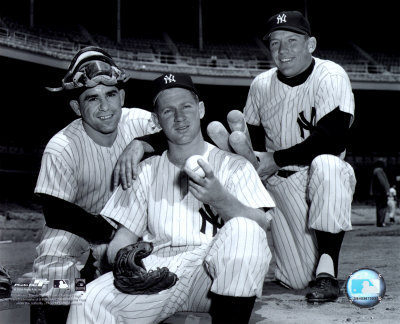
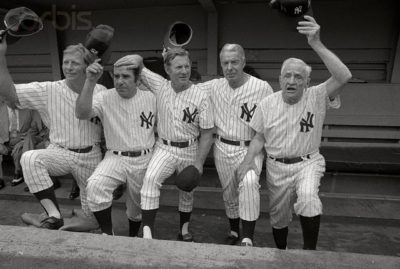
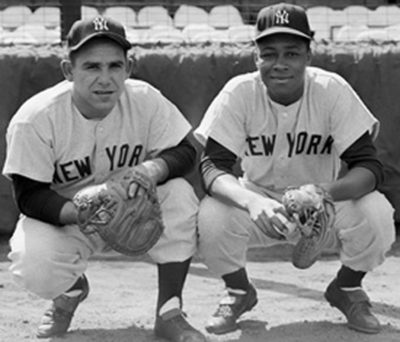
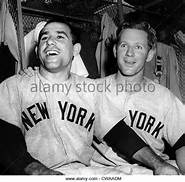
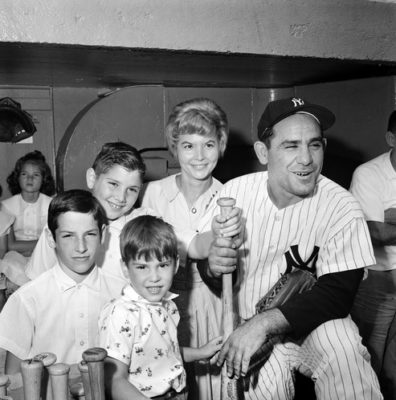
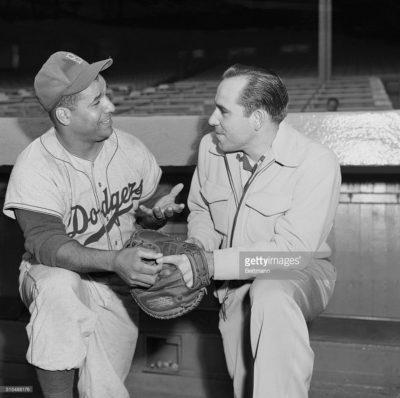
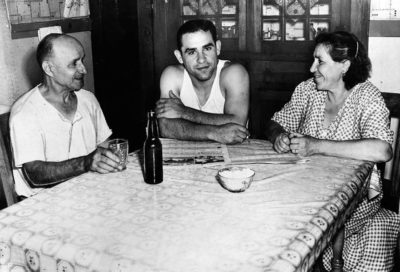
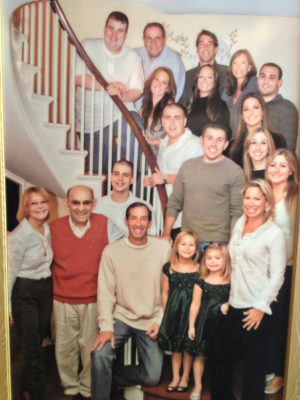
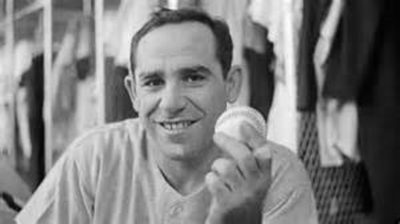
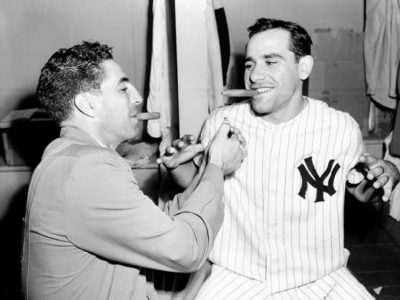
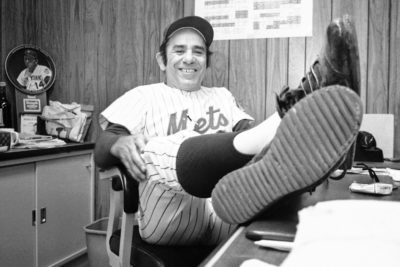
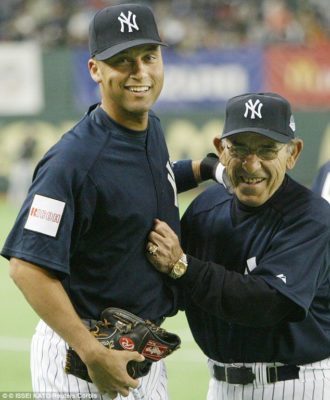
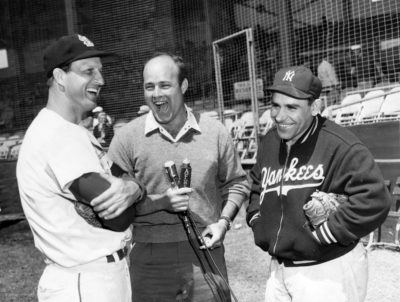
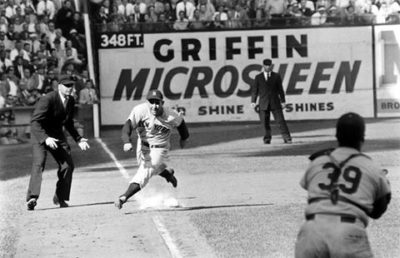
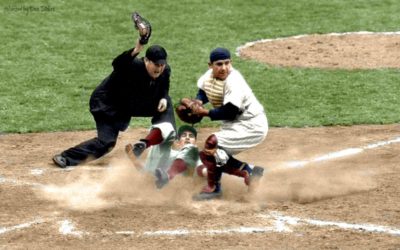
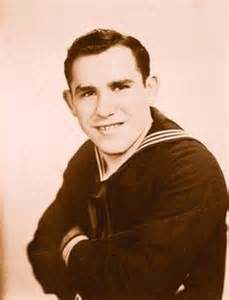
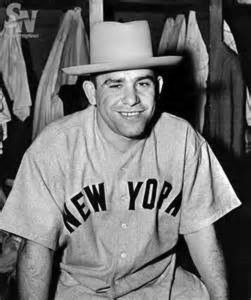
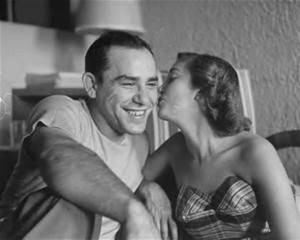
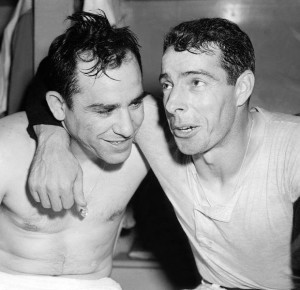

Enjoy anything and everything Yogi!
I think it’s worth mentioning that Triandos was one of the main cogs in the trade that brought Bob Turley and Don Larsen to the Yankees. Ditto Robinson coming over for Eddie Lopat. I think those are trades we all endorse.
Sadly, the Yankees received little for Lollar, but I guess they knew what they were doing stockpiling catchers.
Great article; by Mr. Jankoski, about a great Yankee. You don’t have to be a Yankee fan {or even a baseball fan; for that matter} to enjoy the storied career of Yogi Berra. Nice mention of # 10 Sherman Lollar btw, who; as a young sprout, I saw play numerous times @ Comiskey Park. For those interested, there’s a superb show that was broadcast; {I’m guessing some 20 years ago ?} hosted by the late Tim Russert, that featured four HOF catchers : Johnny Bench, Carlton Fisk, Gary Carter and the always entertaining Yogi. Although very insightful and interesting due to the comments and discussion by Bench, Fisk and Carter, IMHO the star of that show was Berra. I’m sure you can find it on YouTube. Although it was not included in the photos for this essay, I’ve always enjoyed the classic photo of Yogi flashing his ten WS rings on all ten of his stubby digits. Nice job, BHCA contributors. Thnx.
Thanks Vince! Nice comments.
Berra once, in his rookie year 1946, attempted to throw out a runner stealing second and hit the pitcher in the stomach.
Should have made MVP in ’50 with a .322 BA, 28 HR and 124 RBI–while striking out only 12 times!
My three cents (inflation). Berra’s left-handed bat played well at Yankee Stadium with its short right field, 296 down the line. Robinson was past thirty and Lollar, Triandos, Niarhos, Silvera, and Houk were righthand hitters. Lou Berbert and Clint Courtney were a couple of left-handed bats the Yanks tried around that time as backup catchers but were found wanting. Courtney had a decent career but kept getting into fights and the Yankees had Billy Martin for that.
Thanks Kevin…some good points.
Kevin,
I forgot about Courtney, and never thought about Berberet. Thanx for the comment.
Thank you for your fine article and insight to Yankee catching of Berra’s early days. No-one looked less like a baseball star than Yogi, but boy could he play.